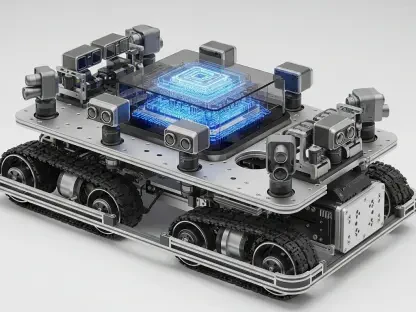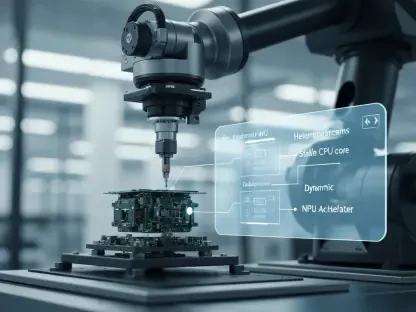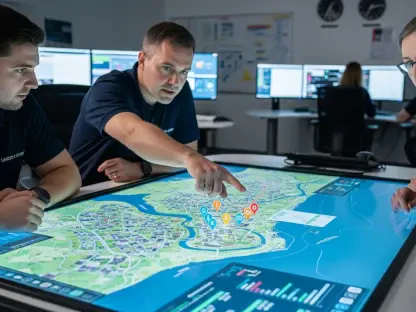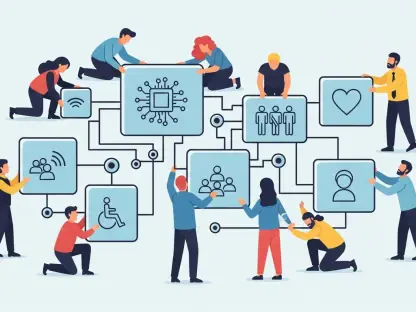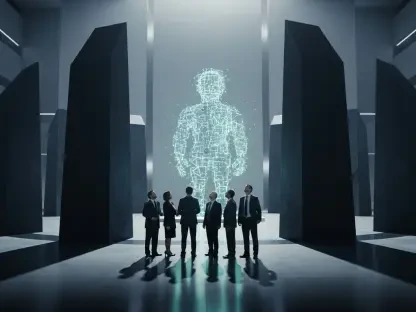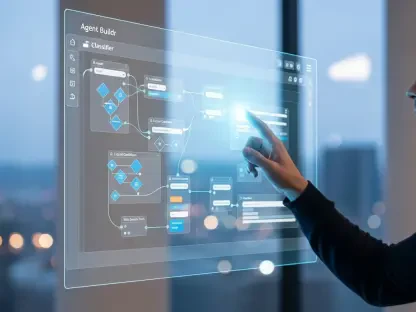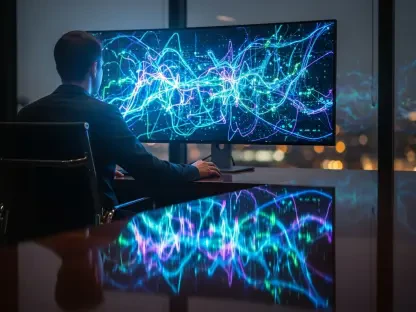Imagine a world where your smart device not only hears your voice but also sees what you see, responding with uncanny precision to your environment. This isn’t science fiction; it’s the reality being crafted by a pioneering company in AI innovation. The integration of sight and sound in artificial intelligence marks a pivotal shift in how humans interact with technology, promising seamless, intuitive experiences across industries. This review delves into a groundbreaking development that combines visual and audio intelligence, exploring its features, real-world impact, and the challenges it faces in redefining human-machine interaction.
Core Features of Vision AI
Multimodal Synchronization
At the heart of this technology lies the remarkable ability to process visual and audio inputs simultaneously. By integrating live camera feeds with advanced voice recognition, the system ensures that sight and sound work in perfect harmony. This synchronization eliminates noticeable delays, creating a fluid conversational experience that feels natural to users, whether they’re asking about a nearby object or issuing a complex command.
This technical feat is no small achievement. Ensuring real-time processing without lag requires sophisticated algorithms and robust hardware support, a challenge that has been met with innovative engineering. The result is a system that can keep up with dynamic environments, making it suitable for fast-paced settings where timing is critical to user satisfaction.
Contextual Understanding
Beyond mere synchronization, the technology excels in interpreting user intent through a blend of visual cues and spoken words. This contextual awareness allows the AI to understand not just what is said, but also what is seen, leading to more accurate and meaningful responses. For instance, pointing at an item while asking a question enables the system to grasp the specific focus of the query.
Such capability transforms interactions from mechanical exchanges into more human-like dialogues. The significance of this feature becomes evident in diverse scenarios, from navigating unfamiliar places to performing intricate tasks. By bridging the gap between verbal and visual data, the AI offers a deeper level of engagement that traditional voice assistants cannot match.
Latest Advancements in Multimodal AI
The push toward integrating multiple sensory inputs represents a broader trend in AI development, and this technology stands at the forefront of that movement. By combining visual and auditory processing, it sets a new standard for responsive systems that mimic human perception. This innovation reflects a strategic vision to make technology an intuitive partner rather than a mere tool.
Leadership insights highlight the ambition behind this progress. CEO Keyvan Mohajer envisions a future where human-technology interaction feels as natural as speaking with a friend, while VP of Engineering Pranav Singh emphasizes the technical breakthroughs in merging visual and conversational intelligence. Their combined perspectives underscore a commitment to both user experience and engineering excellence.
Complementing these advancements, updates to the core AI system, such as Amelia 7.1, enhance overall performance with improved speed and accuracy. These upgrades ensure that the underlying framework supports the demands of visual integration, providing a stronger foundation for cutting-edge features. Together, these developments signal a cohesive approach to evolving AI capabilities.
Real-World Applications
The practical implications of this technology span multiple industries, showcasing its versatility in everyday scenarios. In the automotive sector, drivers can receive real-time information about landmarks or road conditions simply by asking while the system visually identifies the context. This hands-free assistance enhances safety and convenience on the go.
In retail and industrial settings, the impact is equally transformative. Retail workers can access inventory data by looking at shelves, with the AI overlaying relevant information, while mechanics wearing smart glasses benefit from step-by-step guidance during repairs. Such applications reduce errors and speed up workflows, directly benefiting operational efficiency.
Another compelling use case lies in service environments like drive-thru kiosks. Here, the technology confirms orders visually as they are spoken, minimizing misunderstandings and accelerating service delivery. These examples illustrate how integrating sensory inputs streamlines processes, ultimately improving customer satisfaction across diverse touchpoints.
Challenges and Limitations
Despite its promise, the technology faces significant hurdles in achieving flawless performance. Synchronizing visual and audio inputs in real time remains a complex technical challenge, as even minor delays can disrupt the user experience. Ensuring reliability under varying conditions, such as poor lighting or background noise, requires ongoing refinement.
Privacy concerns also pose a notable barrier. Constant camera feeds raise questions about data security and user consent, particularly in sensitive environments. Regulatory frameworks may further complicate deployment, as compliance with local laws becomes a critical consideration for widespread adoption.
Additionally, market acceptance presents its own set of obstacles. Convincing businesses and consumers to embrace a system that relies on continuous visual input demands clear communication of benefits over risks. Efforts to address these limitations through enhanced security measures and user education are underway, aiming to build trust and facilitate broader implementation.
Future Outlook
Looking ahead, the potential evolution of this technology appears boundless. Further integration of sensory inputs, such as touch or gesture recognition, could elevate its capabilities, creating even more immersive interactions. Advances in contextual intelligence might also enable the AI to anticipate user needs before they are explicitly stated.
The long-term impact on industries and daily life could be profound. Envisioning AI as a natural conversational partner opens doors to smarter homes, more efficient workplaces, and safer public spaces. As these systems become more intuitive, they may redefine societal expectations of technology’s role in supporting human endeavors.
Speculation on upcoming innovations suggests that breakthroughs in processing power or machine learning algorithms could solidify this technology’s leadership in the AI landscape. With a focus on overcoming current limitations, the trajectory points toward a future where multimodal systems become the norm, seamlessly blending into the fabric of everyday experiences.
Final Thoughts
Reflecting on this evaluation, the journey of integrating visual and audio intelligence marks a bold step forward in AI innovation. Its strengths in enhancing user engagement through synchronized inputs and contextual awareness stand out as transformative, though challenges like privacy and technical reliability temper its immediate impact. Looking back, the technology showcases immense potential to reshape interactions across industries.
Moving forward, addressing privacy concerns through transparent data policies and robust encryption should be prioritized to build user trust. Continued investment in refining synchronization and expanding real-world testing could further solidify its practical value. As a next step, collaboration with regulatory bodies to establish clear guidelines would pave the way for smoother market integration, ensuring that this groundbreaking system reaches its full potential in revolutionizing human-machine communication.



